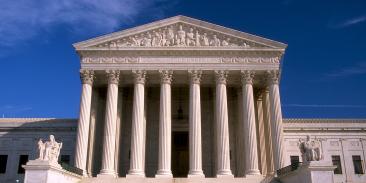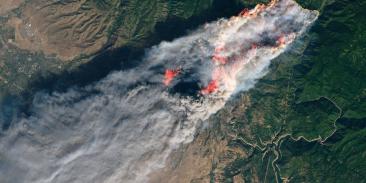California Releases Preliminary Draft Cap-and-Trade Climate Regulation
(Sacramento, CA – November 24, 2009) Environmental Defense Fund praised the California Air Resources Board (CARB) for its preliminary draft regulation (PDR) to reduce global warming pollution in the state. The PDR outlines key concepts the agency is considering as its designs a comprehensive cap-and-trade program.
California’s groundbreaking clean energy law, The Global Warming Solutions Act (AB 32), requires cutting global warming pollution 15 percent by 2020. The CARB board approved a plan last December calling for a cap-and-trade program that covers 85 percent of all greenhouse gas emissions in California by 2020.
“On the eve of the international climate negotiations in Copenhagen next month, California’s ‘leadership by example’ is an important sign that meaningful action is occurring at the sub-national level in the United States and around the world,” said Derek Walker, director of the California Climate Initiative at Environmental Defense Fund, which co-sponsored AB 32. “California is taking another important step on the path to a clean energy future that will create economic opportunities and environmental benefits for all Californians.”
Cap-and-trade is a proven, effective mechanism for cutting pollution quickly and at the lowest cost, a particularly important consideration given the economic downturn. In the 1990s, a cap-and-trade program incorporated into the federal Clean Air Act achieved 100 percent compliance in reducing sulfur dioxide emissions that cause acid rain at just 20 to 30 percent of the cost forecast by the U.S. Environmental Protection Agency.
The PDR highlights the pros and cons of various design approaches. CARB has gotten broad stakeholder input at 21 public workshops and is taking public comment on the PDR until mid-January.
A Proposed Draft Regulation will be released for further public comment in spring 2010, and the final regulation is set to be approved by CARB in October 2010. California’s cap-and-trade program is scheduled to begin on January 1, 2012.
“California is once again leading the world in tackling a complex, but critical environmental and economic challenge,” concluded Walker. “We are showing the world the power of state leadership in promoting innovation, while helping combat the most dangerous impacts of global warming.”
Since AB 32 was signed in 2006, five other states (Connecticut, Hawaii, Maryland, Massachusetts and New Jersey) have passed laws capping their greenhouse gas emissions. California’s own cap-and-trade program will be linked to the Western Climate Initiative (WCI), a partnership of seven U.S. states (Arizona, California, Montana, New Mexico, Oregon, Washington and Utah) and four Canadian provinces (British Columbia, Manitoba, Quebec and Ontario) that are working together to develop a regional cap-and-trade market.
The preliminary draft regulations are available on the CARB website at: http://www.arb.ca.gov/cc/capandtrade/meetings/121409/pdr.pdf.
With more than 3 million members, Environmental Defense Fund creates transformational solutions to the most serious environmental problems. To do so, EDF links science, economics, law, and innovative private-sector partnerships to turn solutions into action. edf.org
Latest press releases
-
New Analysis Finds Indigenous Lands and Protected Areas Are Key in Slowing Deforestation; Without them Brazilian Amazon Forest Loss Would be 35% and Carbon Emissions 45% Higher
October 28, 2025 -
New Poll: Republicans, Democrats and Independents Strongly Oppose Weakening Chemical Safety Law
October 27, 2025 -
Court Rules New York Must Implement State Climate Law and Deliver Swift Action
October 24, 2025 -
EDF Goes to Court to Help Defend California Climate Risk Reporting Laws That Protect People from Financial Damage
October 24, 2025 -
Oregon Water Partnership Applauds Gov. Kotek’s Executive Order to Promote Resilience of Communities and Natural Working Lands and Waters
October 23, 2025 -
Community, Health and Environmental Groups Sue to Stop President Trump’s Unlawful Toxic Air Pollution Exemptions
October 22, 2025










